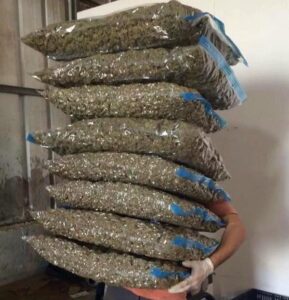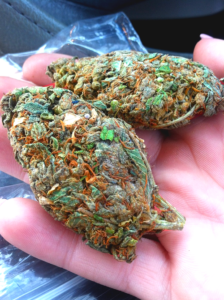
Weed in Tangshan — a practical, human-readable.
Quick summary: cannabis (commonly called “weed”, “marijuana” or 大麻 dàmá in Chinese) carries very different meanings around the world. In Tangshan — a major industrial city in Hebei province, northeast of Beijing — the plant is treated under the same national laws and enforcement practice that apply across mainland China: industrial hemp is permitted under tight controls, while recreational use, possession, trafficking and unlicensed cultivation are illegal and can attract severe penalties. This article explains the legal framework, cultural background, local context for Tangshan, risks and penalties, harm-reduction advice for residents and visitors, and authoritative resources. (Wikipedia) Weed in Tangshan
1. Tangshan in one paragraph (why local context matters) Weed in Tangshan
Tangshan (唐山) is an industrial city on the northeastern coast of Hebei province, about 150–160 km east of Beijing. It’s historically important for heavy industry, mining and steel production, and it was rebuilt after the devastating 1976 earthquake into a modern urban center. The city’s scale, economy and proximity to major transport corridors mean that national policies and central government enforcement patterns are strongly felt there — local law enforcement generally follows national anti-drug policy closely. For readers who want a quick local primer on Tangshan itself, see Tangshan’s city profile. (Wikipedia)
2. Legal status of cannabis in China — the headline Weed in Tangshan
Across mainland China, recreational cannabis is illegal. That means Tangshan — as a Chinese city — follows the same national legal framework. (Wikipedia)
Why this matters practically Weed in Tangshan
- Possession and use: Simple possession of even small amounts can trigger detention, compulsory rehabilitation, or criminal prosecution depending on the case and local enforcement. Criminal penalties scale with quantity and the nature of the offense.
3. Industrial hemp vs. recreational cannabis — an important distinction Weed in Tangshan
China has a long history of hemp use (for fiber and seed) and the modern legal environment recognizes that distinction: industrial hemp (low-THC varieties used for textiles, seed oil, etc.) is permitted in regulated contexts, while psychoactive cannabis (with significant THC content) is illegal outside very narrow, approved medicinal or scientific settings. Harvesting, processing or selling hemp-related products is only lawful when conducted under official permits and supervision. This distinction creates a legal grey area for certain hemp-derived products (for example, CBD or CBD-containing goods), and regulatory responses can vary across jurisdictions. (Wikipedia)
4. Enforcement in practice — what happens on the ground
Mainland China maintains a strict, low-tolerance approach to illicit drugs. Enforcement agencies (public security bureaus, anti-drug units) actively investigate and arrest individuals involved in the illegal possession, sale or cultivation of cannabis. Media and expert accounts indicate that even small-scale cases can result in administrative detention or compulsory rehabilitation; more serious cases attract criminal charges. Foreign nationals are not exempt from prosecution and may face deportation after serving sentences. For travellers and residents in Tangshan, the practical implication is simple: do not possess, buy, sell or transport cannabis.
5. Health, safety and harm-reduction — non-judgmental guidance Weed in Tangshan
This guide does not condone illegal activity. If you live in or visit Tangshan, following local law is essential. Beyond legal risks, there are health and safety considerations:
- Unknown composition: Illicit products may be adulterated, contain synthetic cannabinoids (which can be much more dangerous), or be mixed with other substances. Avoid assuming a product is “safe.”
6. Tangshan-specific concerns and scenarios
- Visitors and students: Many travellers and foreign students come to the Hebei region for work or university. The best personal policy is to comply with Chinese law: do not travel with or attempt to use cannabis products in Tangshan. Recent media and legal guides strongly warn that foreigners face the same punitive measures as nationals.
7. What the law publications and experts say (sources you can trust)
- Wikipedia — Cannabis in China: a general overview of historical, legal and industrial context for cannabis and hemp in China. Useful as a starting point. (Wikipedia)
- Law firm / legal guide summaries (CMS Expert Guides): practical legal breakdowns of how Chinese narcotics law treats cultivation, possession, and the control of raw drug plants; good for readers who want an English-language legal summary with citations to Chinese law.
8. Advice for residents, students and travellers in Tangshan
- Don’t bring cannabis or related products into China. Customs enforcement is strict; penalties for smuggling or importation are severe. This includes seeds, oils, edibles and vaping gear containing cannabis derivatives.
9. Economic and social angles — hemp industry vs. illicit markets
China is a major global player in hemp fibre and industrial hemp cultivation for textiles and seed, and some provinces have developed regulated hemp industries. That legal industrial activity is not an authorization for recreational cannabis use — it’s a commercial agricultural and industrial sector. On the illicit side, as with many countries, illegal supply networks can exist; being associated with those networks carries major legal risk. (Wikipedia)
10. Reporting, rehabilitation and diversion
Chinese anti-drug policy historically includes compulsory rehabilitation for certain users and administrative punishments for minor drug use, alongside criminal prosecution for more serious offenses.
11. Frequently asked questions (FAQ)
Below are straightforward, non-judgmental answers to questions people commonly ask about cannabis in Tangshan.
Q: Is weed legal in Tangshan?
A: No. Recreational cannabis is illegal throughout mainland China, including Tangshan. Only industrial hemp under strict regulation and certain narrowly defined medical/scientific exemptions exist. (Wikipedia)
Q: Can I bring CBD oil or hemp products into Tangshan?
A: Bringing CBD or hemp products into China is risky. Chinese regulators have taken firm stances in the past against CBD products, and enforcement can be severe; do not assume products legal at home will be allowed. Check official customs guidance and consider leaving such items behind.
Q: What happens if I’m caught with a small amount?
A: Outcomes vary: administrative detention, compulsory rehabilitation, or criminal charges are possible. The response depends on amount, intent (personal use vs. trafficking), prior record and local prosecutorial decisions. Legal counsel is critical.
Q: Are foreigners treated differently?
A: No — foreign nationals are subject to Chinese law and can face the same penalties as citizens. Embassies can offer consular assistance but cannot overturn local prosecutions.
Q: Is industrial hemp production present in Hebei or Tangshan?
A: China has hemp cultivation regions, but permitted industrial hemp projects are regulated and typically tied to designated processing and commercial channels. There is no general license to grow psychoactive cannabis. For specifics on local industrial projects, consult provincial agricultural or commerce announcements. (Wikipedia)
13. Final recommendations — plain and practical
- If you live in or plan to visit Tangshan, treat cannabis and cannabis products as illegal. The safest path is to avoid possession, use, importation or sale of any cannabis-derived products. (Wikipedia)
- If you have a medical question about a prescribed cannabinoid medicine from another country, consult a medical professional and Chinese regulatory guidance well before travel — do not bring such medicines without explicit legal approval.
14. Notes on sources and limits of this article
This article summarizes publicly available English-language reporting and legal guides about cannabis law in China and background information on Tangshan. Laws and enforcement practice can shift — particularly on emergent issues like hemp-derived products and CBD — so for time-sensitive or high-stakes situations (e.g., planning travel with medical cannabis), consult an up-to-date official source or a qualified lawyer. Key background sources used here include Wikipedia’s overview of cannabis in China, a recent expert legal guide, and reporting that summarizes enforcement practice. (Wikipedia)
I have used Global Weedworld (Globalweedworld@galaxyhit.com) at least 4-10 times and every time it has been a top notch.
He is the best local plug you can find around. He is very pleasant, friendly and fast. He is a lifesaver.
He sells top shelf WEED and other stuffs at moderate prices. I will always recommend this guy when people ask me my ” go-to”.
All you have to do is follow his instructions.
Just send him an email and I bet you will come back for more once you finish with what you bought because his quality is amazing.
Also Contact him on his telegram link telegramhttps://t.me/GlobalweedWorld
⚠️ Know that he do not have telegram channels only the telegram link above

The strain was exactly what I was looking for. It had that perfect balance, and the high was smooth. Also, the packaging was discreet and professional. Really impressed
I’ve been buying online for a while, but this shop’s service and product quality set them apart.
Everything was fresh, potent, and the customer service is outstanding
My first purchase and I’m hooked.
Excellent product and the customer support was super helpful in answering all my questions. Highly recommend this site
From browsing to checkout, everything was seamless. Delivery was on time, and the product exceeded my expectations.
I’ll be recommending this to my friends
I’ve been buying from a lot of different places, but this one stands out. The bud is top-notch, and the prices are reasonable.
Will be ordering again soon! Amazing experience! The product was exactly as described,
and the packaging was on point—safe and odor-free. Thank you!
Third order in a row — flawless. Told my friends — now they’re ordering too. This is how weed buying should be. Clean, easy, reliable.
Delivery was crazy fast, and the product… This place is setting the bar for online weed shops. Keep doing what you’re doing. You’ve got a loyal customer for life.
Best decision I made all week. Real ones know. This site is fire. I don’t usually leave reviews, but this deserved one.
I was worried about ordering online, but the packaging was perfect completely. You can tell they care about their customers. Fast replies and reliable support.